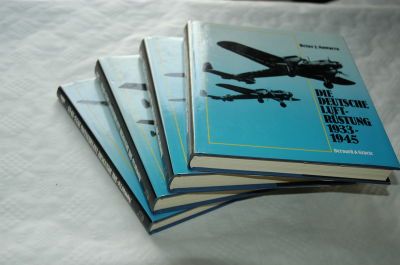deducter wrote:As a counterargument to Radoye, from the perspective of balance of balance if I introduce the Hs 129B-1 in 1942 with HA only slighty better than the Ju 87D, then why would anyone buy a Hs 129? Especially since a new Hs 129B-1 would have much less exp than an experienced Ju 87D. Similarly, why would I buy a Hs 129B-2 in 1943 when the Ju 87G has better attack? As a counterargument to this counterargument, the Hs 129 would be worth it because it has much better defenses.
Well you pretty much answered yourself, it was about the defenses.
The HS 129 came about after Germans captured and examined the Il-2, they were on one hand appalled at the poor workmanship standards of the Russian plane but on the other painfully aware of its deadly capabilities and how hard was it to shoot it out of the sky due to all important components being heavily armored.
They decided to make something similar themselves, a heavily armored ground attack plane seemingly impervious to enemy fire. Due to more potent German-produced engines being in shortage and great demand for their fighter programme, they decided to use the French Gnome-Rhone, from captured stocks as well as new production from manufacturing lines in occupied France and other places (the engine was license-produced before the war in several other nations, Poland, Romania etc).
Hs 129 never really managed to replace the venerable Stuka in the attack role, due to somewhat underpowered engine for all that weight it had indifferent performance and the offensive capabilities with the originally installed armament (twin machineguns, twin 20mm and 200kg bombs) was insufficient. Most of these early machines ended up handed down to one of the minor Axis nations, less than 100 being produced.
The first upgrade to improve the offensive punch of Hs 129 involved the addition of an underbelly gun firing armor piercing ammo, in this guise turning it into a flying tank hunter, much like the Il-2 which inspired it.
Several types of weapon were tested, all single installation, among others 30mm MK101 (most often installed), MK103 and the 37mm BK3,7 the same of which a pair was carried by the G-stuka.
This fact is the reason why G-Stuka should have stronger attack, because it has twice the firepower, but Hs 129 should have an advantage in survivability due to heavy armor.
About 750 of these were produced.
(A digression - the G-Stuka was not really an upgrade for the B- and D-Stukas, both earlier models were classic dive-bombers and there were several unrelated projects to develop a next generation replacement for it; the G-stuka was intended as a tank hunter, very much like the Hs 129, and some other projects like Ju 88P for instance. These should IMO be grouped together, and separated from the dive-bombing Stukas because they served in different types of units and fulfilled different roles.)
However, soon even this has proven unsatisfactory and even larger weapon with an even heavier punch was considered. After several configurations were tested, they settled for the 75mm BK7,5 gun. This version went in the production too late to change anything in the war that was by then long lost. Finally, it was capable defeating even the heaviest of contemporary tanks but for the price of even further degrading its flying performance, its handling could be best described as marginal.
deducter wrote:I don't plan on introducing any Hs 129B-3, weren't only about 20 of those planes made?
That is correct, but had the war went differently there would certainly be more of these produced. After all, there were only two Maus tanks ever and Germans never invaded the USA yet that did not prevent both of these being included in the game. In such a scenario the mass produced 75mm cannon armed Hs 129 is not so far fetched.
Historically, the Hs 129 never really replaced or even came close to replace the Stuka and other German ground attack planes like the Fw 190 fighter-bomber versions, there was only about 850 produced (compared to 6500+ Stukas. The main reason was the indifferent performance and limited attack capabilities, but the survivability offered by its design was deemed important enough to keep it in production and continue developing it until a suitable role was found. Finally it was turned into a tank killer, complementing other types in service but never truly replace any of them.
In the game context i don't see Hs 129 in its early variants as a viable replacement for either Stuka or Fw 190F/G, but later variants might become interesting as an alternative for the Ju 87G with less punch but better survivability. IMO you should aim for that when modeling the statistics.










